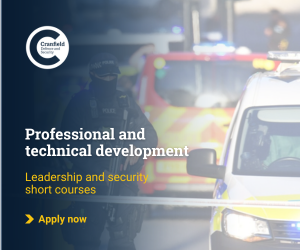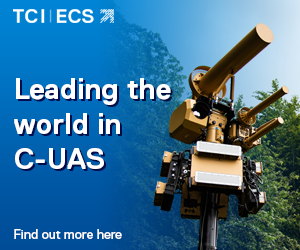Decontaminising supply chains
 Counterfeiting has a long and ignoble history, ranging from art and literature to manufactured goods. Unlike other industries, counterfeiting in the aerospace and defence sectors may have life or death consequences.
Counterfeiting has a long and ignoble history, ranging from art and literature to manufactured goods. Unlike other industries, counterfeiting in the aerospace and defence sectors may have life or death consequences.
Although it is clear that counterfeit parts do enter the supply chain, the time and place of their entry is unpredictable. Managing this uncertainty has become more important due to the recent rise in the incidence of counterfeit reporting.
Most of us are aware of ‘blood diamonds’ (also called conflict diamonds) which are diamonds mined in a war zone and sold to finance an insurgency, an invading army's war efforts, or a warlord's activity. What may be less well-known are conflict minerals which share a similar pedigree and may inadvertently enter the supply chain. They include tin, tantalum, tungsten and gold (referred to as ‘3TG’).
Recent legislative and regulatory initiatives by the OECD and EU seek to keep such ‘contaminated minerals’ out of the industrial supply chain by requiring organisations to prove that such minerals are either not from conflict-affected areas or that their production and trade have not contributed to conflict financing and human rights abuses.
What are counterfeit parts?
The following definitions are common to all standards and regulations relating to counterfeit parts:
- Counterfeit Part – a fraudulent part that has been confirmed to be a copy, imitation, or substitute that has been represented, identified, or marked as genuine, and/or altered by a source without legal right with intent to mislead, deceive, or defraud
- Fraudulent Part – any suspect part misrepresented to the customer as meeting the customer’s requirements (includes Fraudulent recycled – sold as new 'unused')
- Suspect Part – a part in which there is an indication that it may have been misrepresented by the supplier or manufacturer and may meet the generic definition of fraudulent part or counterfeit part
Examples of a counterfeit part can include but are not limited to, the false identification of marking or labelling, grade, serial number, date code, documentation, or performance characteristics. Although most of the focus is on ‘EEE’ (Electrical, Electronic, and Electromechanical) parts, the principles and practices are applicable to other commodity types, including:
- raw materials
- outsourced special processes
- mechanical components
- standard and COTs parts
- IT and communications technology
Plus, all types of ‘matériel’ (i.e. the aggregate of ‘things used’ or ‘needed’ by any organisation for the production of its products – distinguished from personnel).
What are conflict minerals?
In conflict-affected and high-risk areas of the world, organisations involved in mining and trade in minerals have the potential to generate income, growth and prosperity, sustain livelihoods and foster local development. Unfortunately, they may also be at risk of contributing to, or being associated with, significant adverse impacts including serious human rights abuses and conflict. The minerals that pose the greatest threats are tin, tantalum, tungsten and gold, collectively known as ‘3TG’.
For example, conflict minerals have for some years been a particular problem in minerals sourced from conflict-affected areas of the eastern DRC (Democratic Republic of Congo). The DRC’s mineral wealth is enormous. It is estimated that this country contains between 65-80% of the world’s columbite-tantalite (coltan) reserves, 49% of its cobalt reserves and 3% of its copper reserves.
Organisations can, knowingly or unknowingly, be affected by the risk of supply chain ‘contamination’ with conflict minerals. This can occur at a number of stages,
whether mining or trading in the eastern provinces of DRC, in an adjoining country, or further along the chain.
Meeting customer and international requirements
At this time the following three standards contain requirements relating to
counterfeit parts:
- AS5553:2016 Rev B
- IEC TS 62668-1:2016
- AS9100:2016 Rev D
Organisations must plan, implement and control processes, appropriate to their operations and the product, for the prevention of counterfeit or suspect counterfeit parts use and their inclusion in product(s) delivered to the customer. Such processes should consider:
─ training of appropriate persons in the awareness and prevention of
counterfeit parts;
─ application of a parts obsolescence monitoring programme;
─ controls for acquiring externally provided product
─ requirements for assuring traceability of parts and components to their
original or authorised manufacturers;
─ verification and test methodologies
─ monitoring of counterfeit parts reporting from external sources;
─ quarantine and reporting of suspect or detected counterfeit parts
To minimise the risk of counterfeit matériel the golden rule is to only use authorised suppliers; preferably using stockists which are AS9120:2016 certified.
Recent guidance and regulatory initiatives seeking to keep conflict minerals out of the industry supply chain include:
- OECD Due Diligence Guidance (available now)
- European Union adopted Regulation (EU) 2017/821 (in force 2021)
The term ‘due diligence’ means acting with reasonable care and investigating an issue before making a decision on procurement. In other words, it is an on-going, proactive (and reactive) process through which organisations put in place actions to make sure they are able to identify, manage and report on ‘3TG’ risks in their supply chain.
Organisations are advised to formulate their own supply chain policy to conform to the OECD Due Diligence Guidance outlining the ‘3TG’ risks of significant adverse
impacts of conflict minerals. Once the policy has been documented, the organisation must adopt and clearly communicate to suppliers and interested parties, up-to-date information on the policy.















